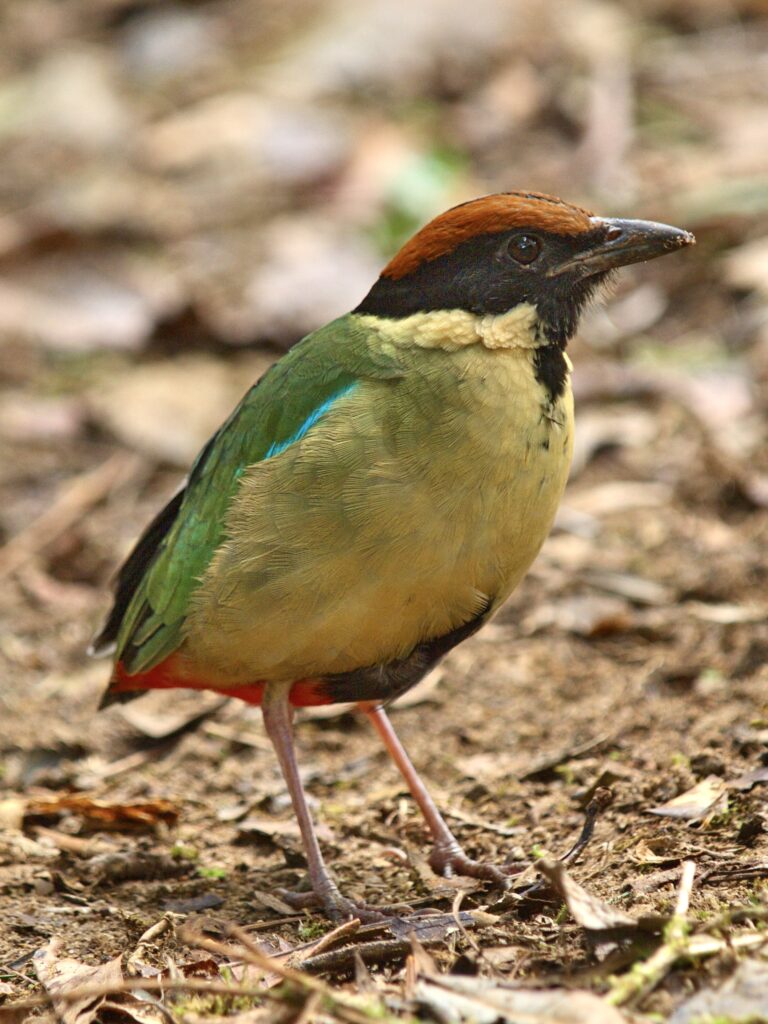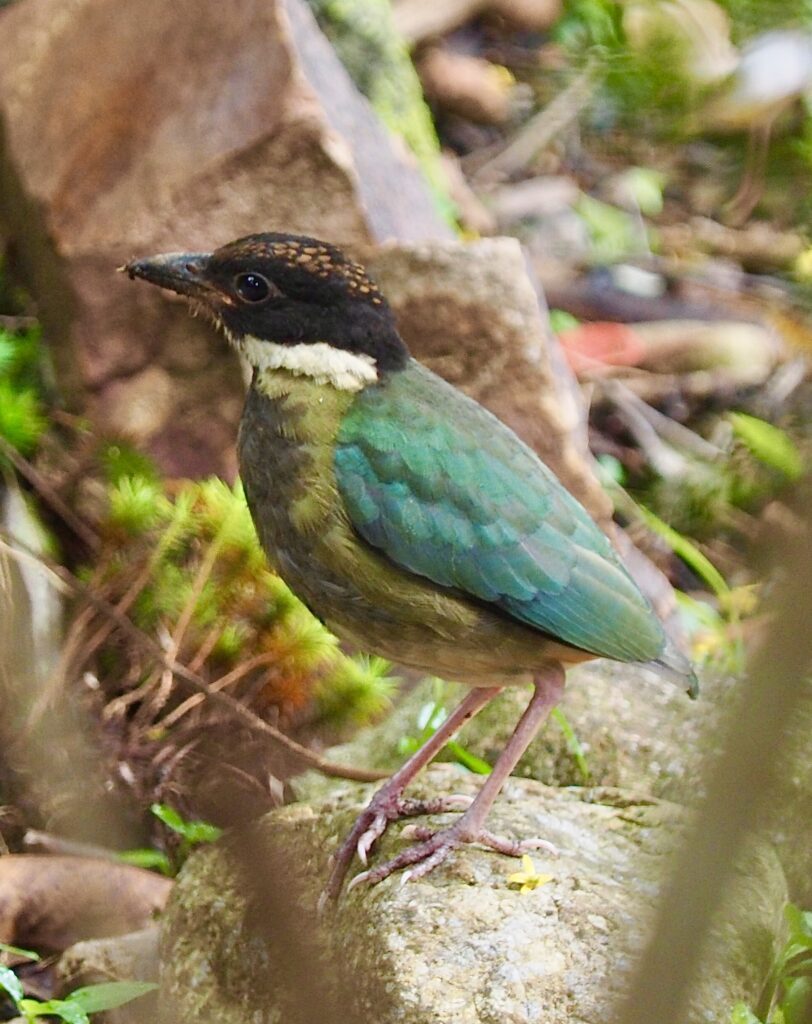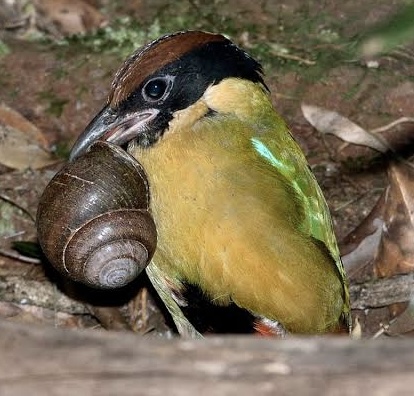Pittas are a group of some 40 species distributed around SE Asia (with one species in Africa). They rank amongst the most gorgeous yet elusive inhabitants of tropical rainforest and are deservedly referred to as ‘jewels of the forest’. The banner for this post gives you a sample of the range and richness of their plumage. Their brilliant colours, and secretive nature has made them targets of interest, and occasionally obsession amongst birdwatchers. A prime example of the latter is documented by Chris Goodie, who has published an entire book (The Jewel Hunter) on his efforts and adventures tracking down every species of Pitta in one year. It’s a delightful and informative read.
Our local species of Pitta is the Noisy Pitta (Pitta versicolor). It is one of 3 species that are resident in Australia. While its plumage is more subdued that some of the species found elsewhere and overseas, its rich colours, with flashes of bright blue when flying make it one of my favourites.

Luckily here in Paluma the Noisy Pitta has become quite accustomed to human activity, and while it does not come to bird feeders I have had Pittas following me around my garden picking up earth worms and other invertebrates exposed by my digging. Glimpses of Pittas flying across the upper rainforested sections of the range road are quite common. A casual day visitor to Paluma is not guaranteed a glimpse of this bird, but its call is usually heard around the village and once learned it is easy to recognize. It’s distinct and regular song is part of its strongly territorial behaviour.
Like most other Pittas, the Noisy Pitta is monogamous and males share the jobs of nest-building and feeding of chicks. Breeding occurs from October to April. The nest is usually a dome-shaped mound of twigs on or near the ground with an opening on the side accessed by a ramp of twigs often paved with mud or debris. While fairly substantial in size they are almost indistinguishable from the pile of twigs that can often be found in the forest leaning up against a tree or sapling.

Pittas spend most of their time foraging on the forest floor for earthworms, snails and other invertebrates. Their feeding behaviour includes two traits that are, in turn fascinating and endearing. Pittas are among the few groups of birds to use tools (in a rather generic sense). Their fondness for snails, and the difficulty in accessing the animal once it has retracted into its shell has led to Pittas taking shells to a specific rock or hard tree root and then repeatedly smashing the shell against this “anvil” until all of the flesh has been exposed.

Image: Sunshine Coast Council from Google
Persistent small piles of shells have been reported next to rock anvils by keen observers in other areas, but I am not sure how common this is around Paluma – I have never seen this, suitable snails may not be that common here, while earthworms are abundant.
Speaking of annelids (the group of invertebrates that includes most worms), one endearing trait of The Noisy Pitta – at least to those of us that spend time tramping along wet forest tracks- is that they are partial to eating a close relative of the earthworm – leeches. Forget about the jewelled plumage, any animal that contributes to the control of leach populations has my undying affection! This dietary interest was discovered here in Paluma and published by one of our famous ex-residents, Cliff Frith who observed a parent with six leeches in its beak returning to feed its nestlings.
While some Pitta species in SE Asia are considered endangered or threatened the status of the Noisy Pitta is of least concern, with a widespread distribution in Qld and occasionally New Guinea. Nevertheless, rainforest clearing and feral cats are key threatening processes which could change its status.
Text and photos (unless specified) by Jamie Oliver
